Round Barrow & Cairn Gallery
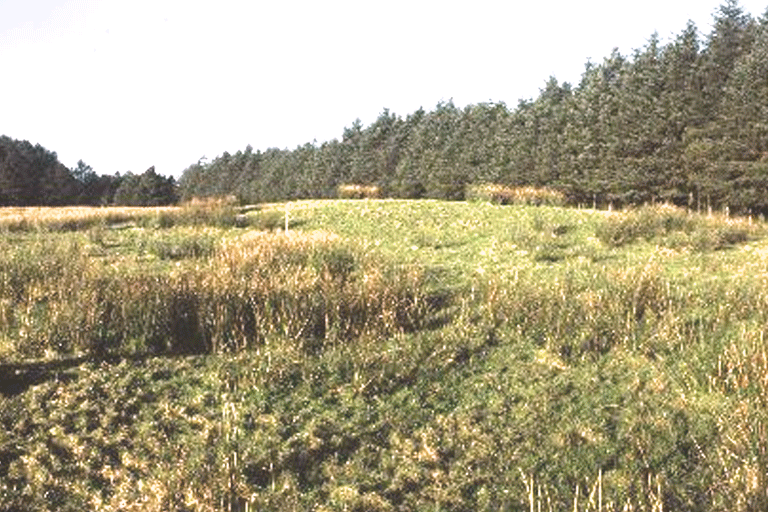
Twmpath Diwlath barrow on Mynydd Margam, Neath Port Talbot. This barrow has been excavated, showing that it was originally built of turf and had a stone cist in the centre.
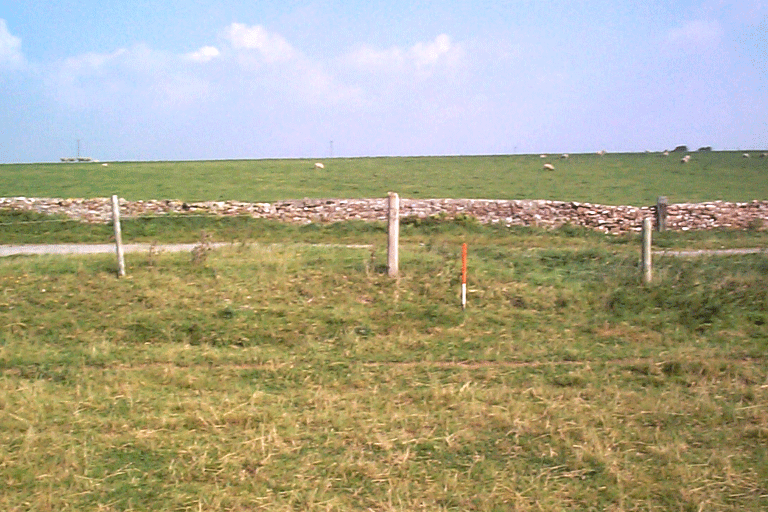
The photograph shows a barrow at the edge of a field at Sker House near Porthcawl, Bridgend. This barrow is one of a group of four discovered in 1968, and when it and its neighbour were disturbed by the widening of the track which runs between the fence and the wall. An unusual shaped stone was found immediately beside this barrow , which was identified by the National Museum and Gallery of Wales as being a Bronze Age mace head, which probably originally accompanied a burial made at the edge of the mound. You can see another barrow from the same group on the main page.

A barrow at Monknash, Vale of Glamorgan which has nearly been destroyed by ploughing. Unfortunately most barrows in the area look very similar, so they have not been illustrated here.

Westward Corner cairn, Barry, Vale of Glamorgan, now preserved among the houses of a new estate. This is one of the few cairns with a ditch around, but this may be partly or wholly because it was dug out as a quarry at some time after the Bronze Age.

A cairn at the Bryn, Aber Valley, Caerphilly, one of a pair preserved in forestry. A hole has been dug into the top, revealing part of a central cist.
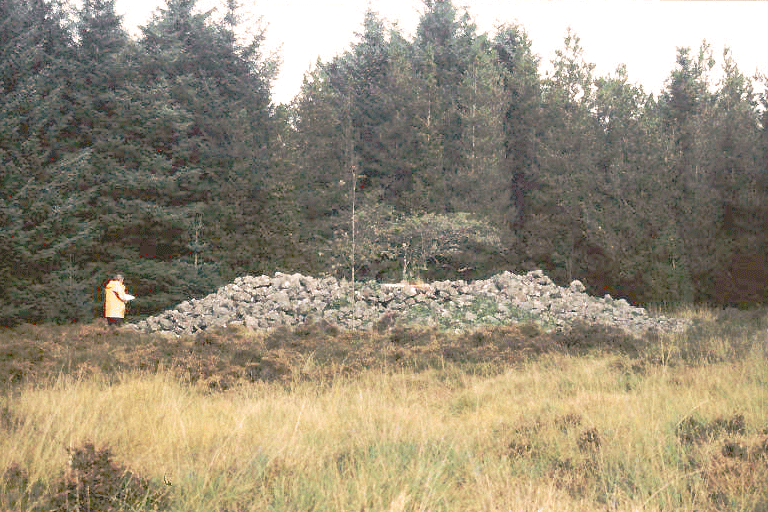
A very large cairn in Penmoelallt Forest on the southern edge of the Brecon Beacons, north of Merthyr Tydfil; the person in the photograph is 1.7m tall. The appearance of cairns varies with the local rock from which they are made, and the southern edge of the Beacons is made up of Old Red Sandstone and Carboniferous Limestone which splits naturally into larger blocks than most of the Pennant Sandstone of the Coal Measures further south.
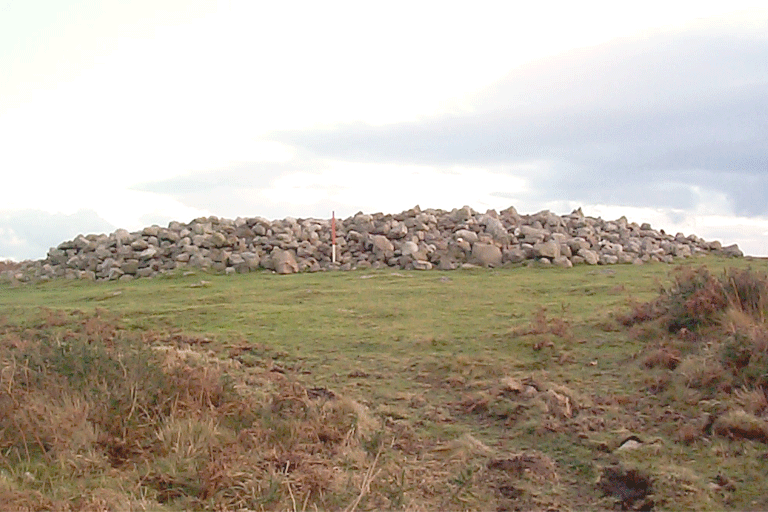
The Great Carn on Cefn Bryn, Gower, near Arthur's Stone. Excavation showed that a kerb consisting of a ring of boulders was embedded in the mound, although it was not clear whether it had been made at the same time as the cairn or before. There was a pit in the middle, containing the remains of unburnt bone on a plank. The cairn had been built over a hearth, a trench and a pit for a wooden post, and there were Mesolithic flints scattered around.
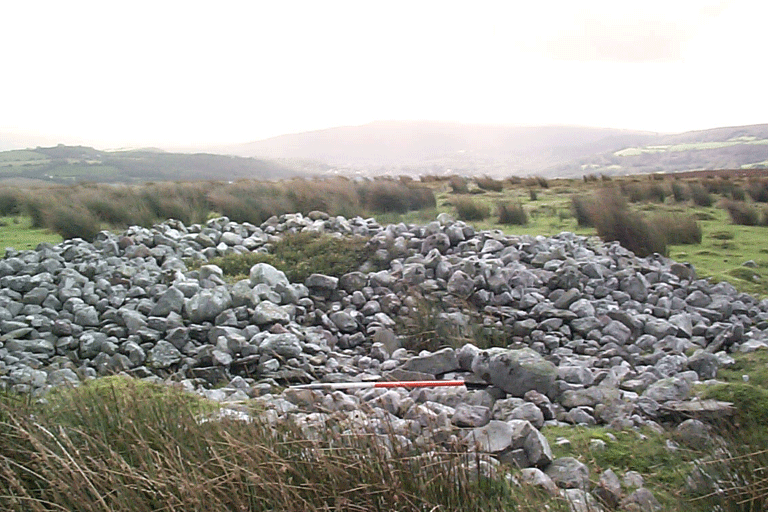
A cairn on Mynydd y Garth, north of Pontardawe Neath Port Talbot, a cairn of the much smaller blocks typical of Pennant Sandstone. Some of the stones of an internal kerb made up of slabs of sandstone can be seen behind the scale pole. The photograph also shows the good view typical of many of the cairns in the Uplands.
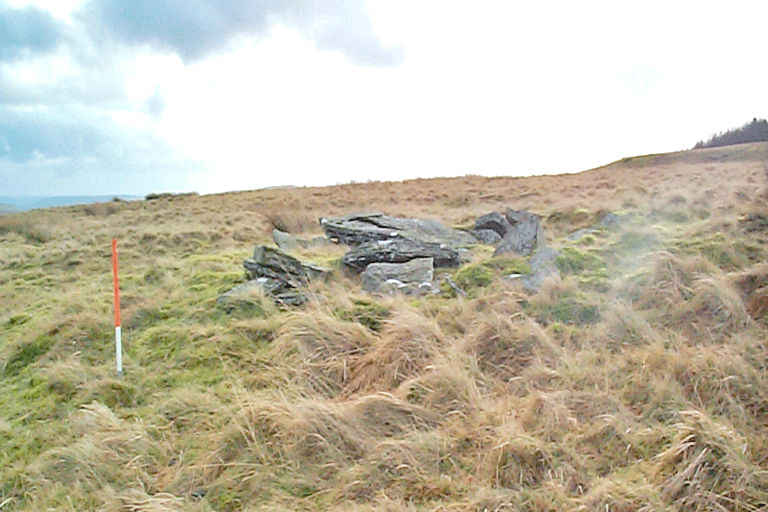
A cairn at Tarren Maerdy on Mynydd Ty'n-tyle above Ferndale in the Rhondda Valley. The photograph shows the slabs which are all that remains of the central cist.

This is the same cairn at Tarren Maerdy looking the other way, over Maerdy and the ridges to the north. In this photograph you can also see some of the smaller stones which make up the body of the cairn, which are also thin slabs of sandstone. Cairns made up of these thin slabs are usually not as big as those made from chunky blocks.
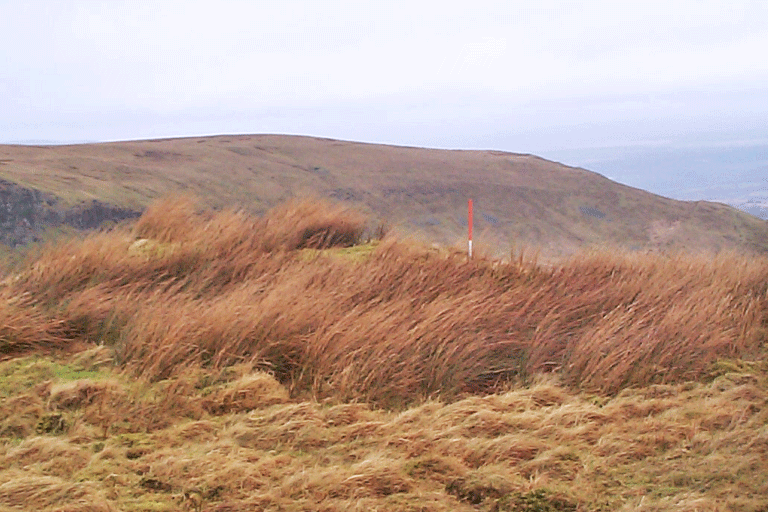
A cairn on Hirwaun Common, one of a group strung out along the northern edge of the Coalfield, overlooking the Brecon Beacons.
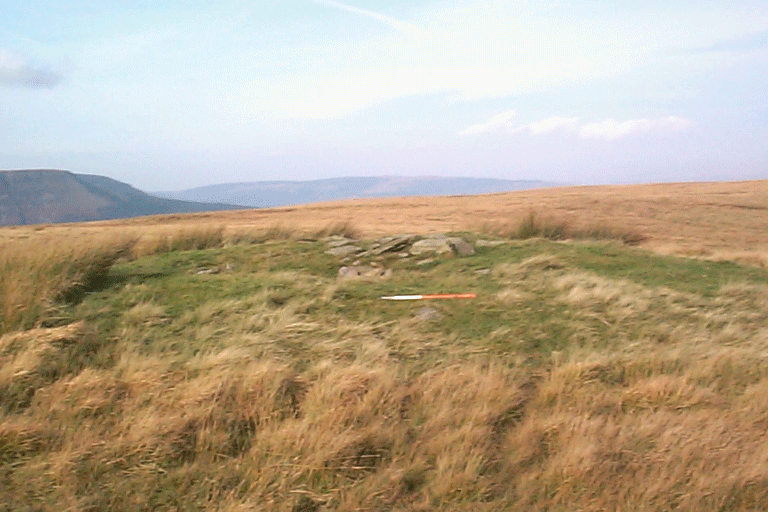
Another cairn on Hirwaun Common from the same group.
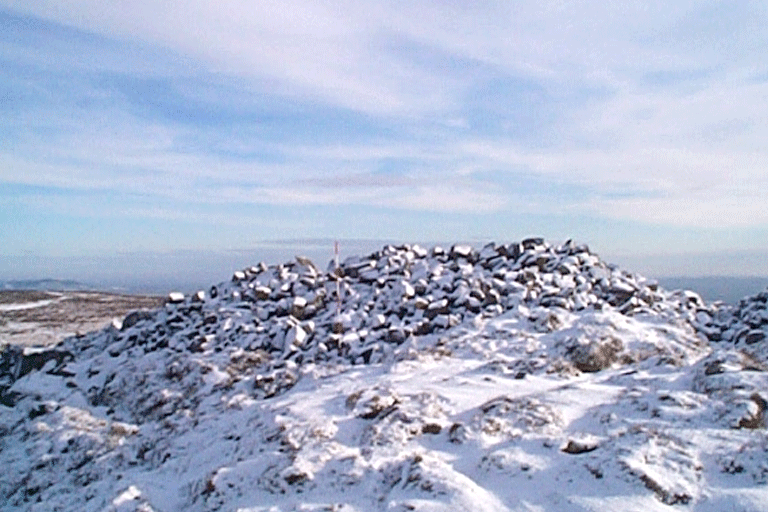
Carn Blorenge on the Blorenge Mountain overlooking Abergavenny, Monmouthshire, in the snow. The scale pole is 2m long painted in 20m stripes.
